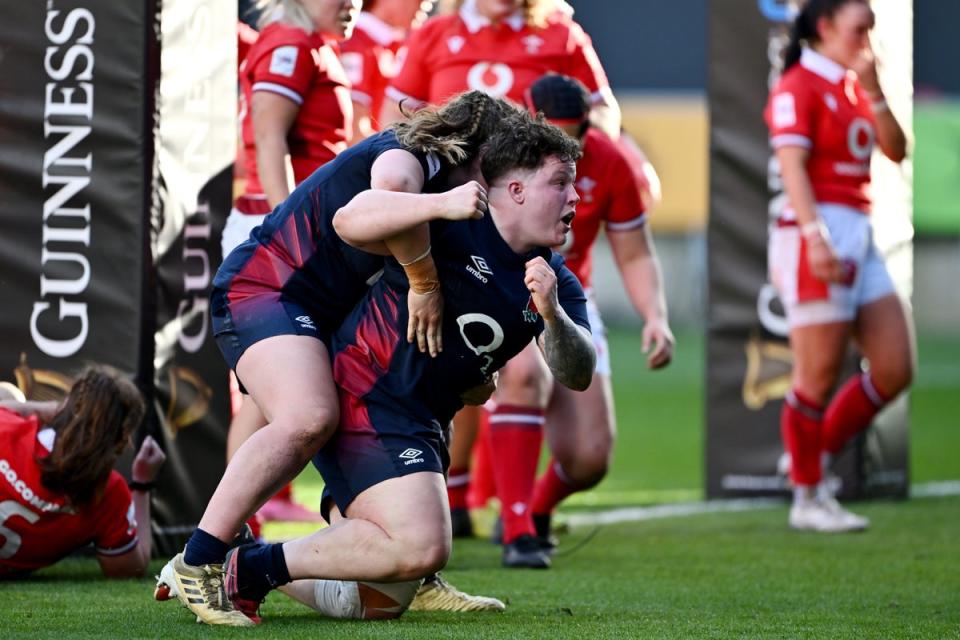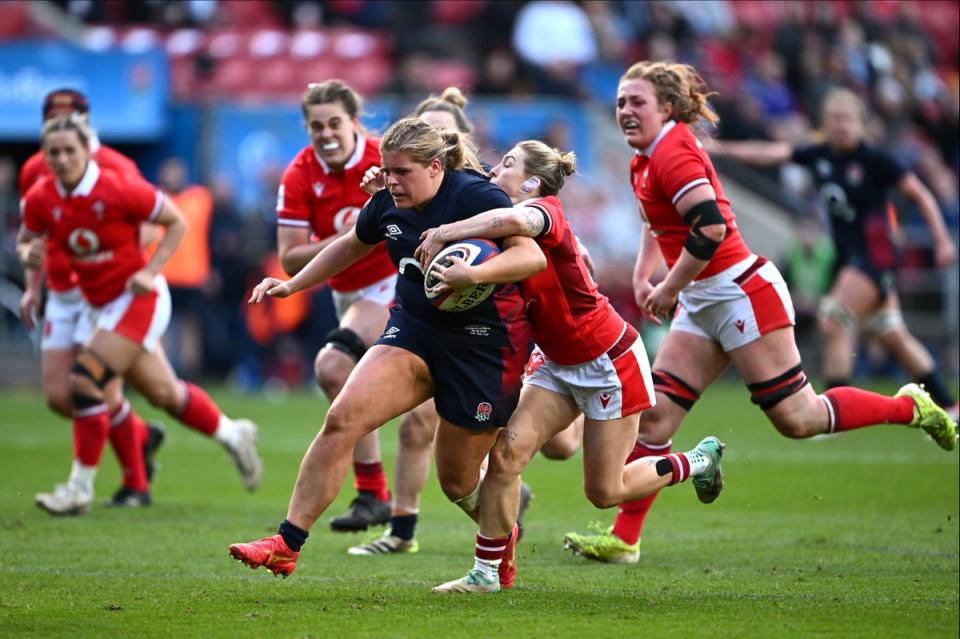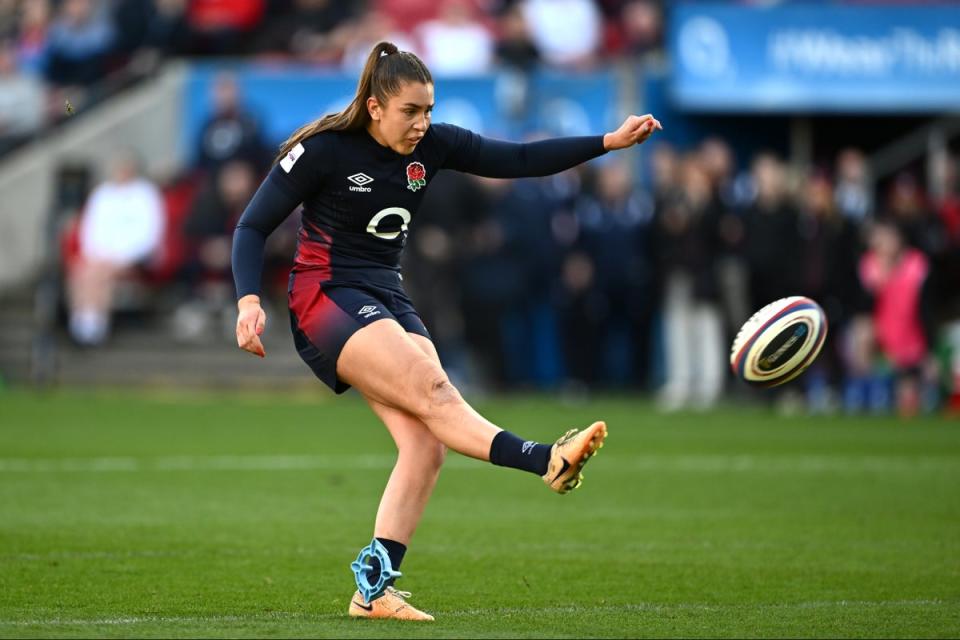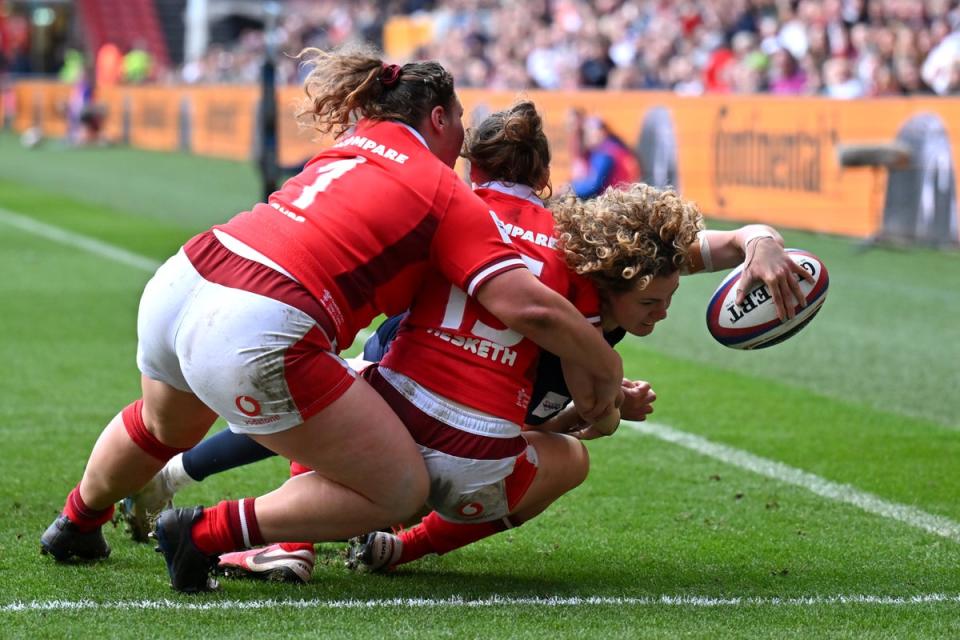Eight-try England again illustrate Women’s Six Nations dominance in Wales thrashing

The latest edition of one of rugby’s great rivalries brought another illustration that the gap between the best and the rest in the Women’s Six Nations remains huge. It is now three years since Wales matched England by funding a professional programme but a great chasm remains between the two sides, the class of this championship simply too fast, too strong and too good.
If last week’s round one win in Italy was scrappy and scratchy, this was more like the Red Roses side that have dominated this tournament for so long, varied and venomous throughout. The hope was that Wales could build on an outstanding first 20 minutes last year in Cardiff that saw them outplay their English visitors, but while a narrower final margin suggests improvement, it was a mixed Welsh performance. Ioan Cunningham was not helped by a smattering of late injury-enforced changes, yet the Wales coach will have been disappointed not to have seen his side produce a better showing for those making the short hop across the Severn.
That travelling contingent helped bolster a crowd that totalled 19,705, a record for a Red Roses home fixture away from Twickenham. There are understandable worries that England’s dominance will eventually prove a limiting factor on the continuing growth of crowds, but for now, it seems, the paying public are perfectly happy to see the hosts win.

And why not when they are capable of doing so in such style. England’s goal for this tournament is to evolve beyond the brilliant basics that have helped them establish their supremacy and instead become a side capable of playing in any which way. Not everything came off but there were encouraging glimpses here, particularly from a beautifully balanced midfield of Holly Aitchison, Tatyana Heard and Meg Jones.
“We want to play with tempo,” captain Marlie Packer said afterwards. “We want to put an exciting brand of rugby on the pitch. We really did show that today. The set piece was phenomenal, our lineout worked really well in attack and defence and gave us front foot ball with which we could play.
“For us, it’s about letting the handbrake off. Balls will go down at some points in the game because of how we are trying to play, but we want the fans to keep coming back and see some real good rugby.”
The intent was set from the first time that England touched the ball. It had been a decent Welsh start, Lleucu George capitalising on a sustained spell of possession by slotting a penalty earned by a powerful scrum, but the visitors were soon behind. Abby Dow blazed a trail beyond Jenny Hesketh, leaving the young full-back for dead on the outside break, and Maud Muir hit the line with power and expert timing to crash over.
England’s sheer speed was posing Wales problems. John Mitchell has placed an emphasis on pace in his group of outside backs, partly explaining Emily Scarratt’s move to inside centre. Jones replaced Helena Rowland, whose tournament is over due to a fractured finger, here, offering the same flicks, tricks, kicks and game-breaking threat honed on the sevens circuit.

The Cardiff-born Jones retains the Welsh twang of her formative days across the border but there are few prouder England internationals. The centre has been a standout in a struggling Leicester team this year and was exceptional here, punching well above her weight defensively and causing opposite number Hannah Jones all sorts of problems in attack. Zoe Aldcroft had already punched in England’s second score when Jones launched a length-of-the-field counterattack, a searing surge followed up by a clever toe ahead, the try eventually finished off by Hannah Botterman.
Wales had the continuity in phase play to maintain possession but not the game-breakers needed to break down a staunch England defence. Some moments of profligacy did not help – Sian Jones corralled at the base of a ruck, Aitchison plucking an intercept – but the hosts largely had Wales’s carriers handled. When Lark Atkin-Davies continued the theme of tight five try-scorers from a maul, England had a bonus point before half-time.
Cunningham had loaded up his bench in the hope of matching England throughout and turned to regular starters Sisilia Tuipulotu and Alisha Joyce-Butchers at the interval. It made little impact – Ellie Kildunne was over for England’s fifth in the corner within three minutes of the restart, and Dow a sixth soon after.
Another replacement did stop the rot. The livewire Keira Bevan was another surprise inclusion on the bench give what her consistency as Cunningham’s number nine and her try was sharply taken, tapping and dancing under the posts.
But, as was always likely, it proved only temporary respite. Kildunne wriggled free for her second shortly after Rosie Galligan bashed over, ensuring that all five tight five forwards were on the scoresheet to illustrate their all-court game.

A strong finish from Wales will leave a degree of optimism moving forward but there are some tough questions for Cunningham and his squad, too. Wales had been delighted to finish third and qualify for WXV1 in this tournament a year ago, but found their trip to New Zealand a bruising experience, roughed up by the established powers of the sport like gap year students. Scotland, conversely, returned from the second-tier competition with a trophy and momentum – it was little surprise to see them push France mightily close.
But Wales seem to have stalled slightly. It was the fundamentals of their game too often letting them down here, the lineout wretched, their exits regularly shallow or messy and the chances passed up when they came. Their scavengers managed to bother England at the breakdown but the focus on that area left space in the wide channels, which their opponents all too easily exploited. The Red Roses march on.

